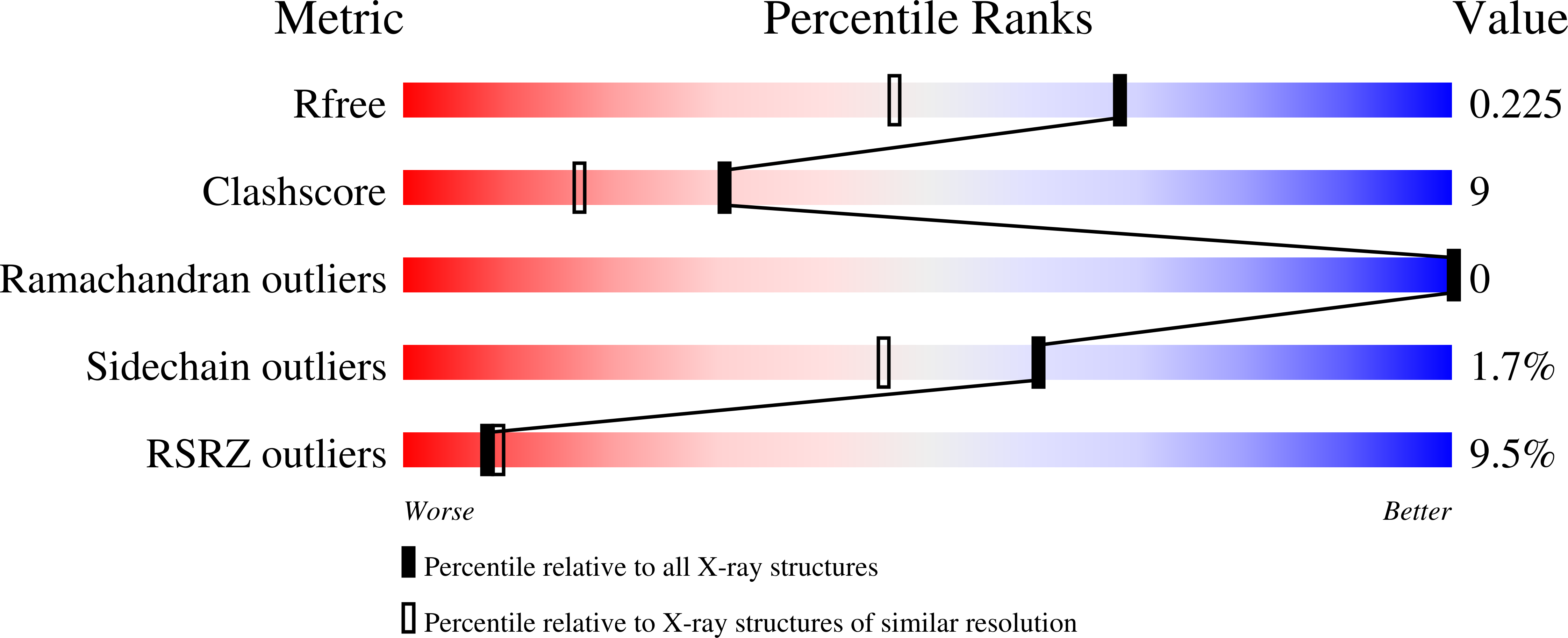Differential Recognition of the Type I and II H Antigen Acceptors by the Human ABO(H) Blood Group A and B Glycosyltransferases.
Letts, J.A., Rose, N.L., Fang, Y.R., Barry, C.H., Borisova, S.N., Seto, N.O., Palcic, M.M., Evans, S.V.(2006) J Biol Chem 281: 3625-3632
- PubMed: 16326711
- DOI: https://doi.org/10.1074/jbc.M507620200
- Primary Citation of Related Structures:
1ZHJ, 1ZI1, 1ZI3, 1ZI4, 1ZI5, 1ZIZ, 1ZJ0, 1ZJ1, 1ZJ2, 1ZJ3, 1ZJO, 1ZJP, 2A8U, 2A8W - PubMed Abstract:
The human ABO(H) blood group A and B antigens are generated by the homologous glycosyltransferases A (GTA) and B (GTB), which add the monosaccharides GalNAc and Gal, respectively, to the cell-surface H antigens. In the first comprehensive structural study of the recognition by a glycosyltransferase of a panel of substrates corresponding to acceptor fragments, 14 high resolution crystal structures of GTA and GTB have been determined in the presence of oligosaccharides corresponding to different segments of the type I (alpha-l-Fucp-(1-->2)-beta-D-Galp-(1-->3)-beta-D-GlcNAcp-OR, where R is a glycoprotein or glycolipid in natural acceptors) and type II (alpha-l-Fucp-(1-->2)-beta-D-Galp-(1-->4)-beta-d-GlcNAcp-OR) H antigen trisaccharides. GTA and GTB differ in only four "critical" amino acid residues (Arg/Gly-176, Gly/Ser-235, Leu/Met-266, and Gly/Ala-268). As these enzymes both utilize the H antigen acceptors, the four critical residues had been thought to be involved strictly in donor recognition; however, we now report that acceptor binding and subsequent transfer are significantly influenced by two of these residues: Gly/Ser-235 and Leu/Met-266. Furthermore, these structures show that acceptor recognition is dominated by the central Gal residue despite the fact that the L-Fuc residue is required for efficient catalysis and give direct insight into the design of model inhibitors for GTA and GTB.
Organizational Affiliation:
Department of Biochemistry and Microbiology, University of Victoria, Victoria, British Columbia V8W 3P6, Canada.


















